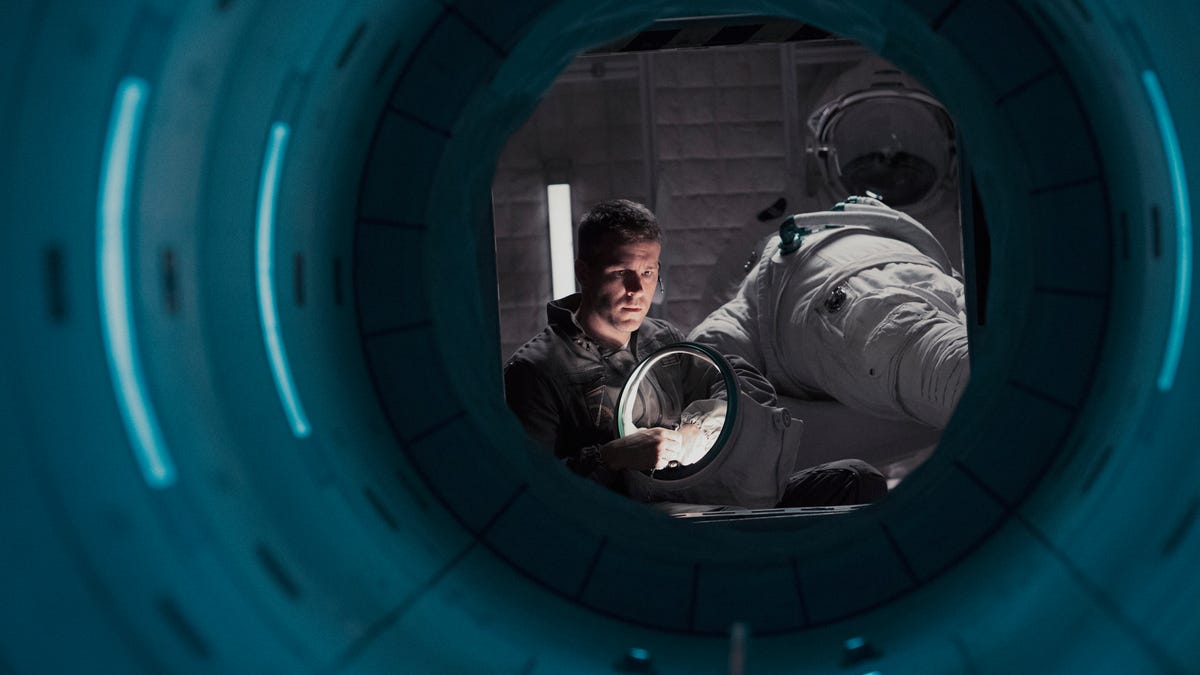'Life' creators made its alien scary real (key word: scary)
Director Daniel Espinosa and writers Rhett Reese and Paul Wernick say they strove for scientific realism so the thriller's life-form would be all the more terrifying.

Which are scarier, aliens or zombies?
The creators of "Life" -- director Daniel Espinosa and writers Rhett Reese and Paul Wernick -- differ on their personal terror levels when it comes to the undead. But they were unanimous in their mission to ratchet up the scariness of their space thriller's lethal alien by making it as scientifically accurate as possible.
"We wanted the movie to pass the Neil deGrasse Tyson test," said Reese in an interview with CNET, alluding to the astrophysicist's penchant for rating films on their scientific accuracy.
Wernick quipped the pair "should have named the creature Neil."
"Life," which officially opened in wide release Friday, stars Jake Gyllenhaal and Ryan Reynolds as members of an astronaut team on the International Space Station. After discovering a single-celled organism in a research pod from Mars, their joy at confirming the existence of aliens turns into a zero-gravity battle, when the creature evolves to serve the same primal instinct of all life-forms: survival.
To make the movie as realistic as possible, the filmmakers turned to experts like geneticist Adam Rutherford and Kevin Fong, a doctor and astrophysicist who's worked with NASA on understanding human adaptation to space.
Espinosa said he let Rutherford, a specialist in the first life that existed on Earth, lead the charge of how the movie's alien would look and behave. "Adam would slowly draw up a theory of how this one cell would develop" based on the setting and circumstances of the movie's plot, he said. The creature, nicknamed Calvin, develops into something like a five-pointed starfish, because it mimics the only other living form in its early environment: the astronaut's five-fingered hand examining it.
Fong helped ensure the fictional astronauts of "Life" were true to real space experiences, according to Espinosa. A scene in the film depicts the ISS commander on a space walk struggling to breathe as her spacesuit fills with liquid coolant -- something that happened to a real astronaut, who nearly drowned in his own helmet before he could get back to the ship's airlock.
Including the scenario in the movie "was all Kevin's idea," Espinosa said.
Espinosa said he opted to fudge scientific realism for cinematic effect in rare instances, like the ISS' docking with a research capsule from Mars. The pod cartwheels toward the space station's arm early in the film to amp up the drama, but in reality, this kind of zero-gravity mission progresses at an excruciatingly slow pace (or, technically, all the moving parts zip along in formation at the same relative speed).
The writers said the message of the movie is simple.
"It gets across a sad fact about life: that life can only exist at the expense of other life," said Wernick. "We're not making a movie that has a big lesson but rather reminds people of that fact."
Reese and Wernick, who also wrote "Zombieland" and "Deadpool" together, say unvarnished reality is why they fear an alien like Calvin more than the undead of their first hit.
"Calvin feels much more real than zombies ever could," Wernick said.
But in Espinosa's case, zombie classic "Pet Sematary" was the one film that terrified him so much as an 11-year-old that he's never been able finish it.
Would he be pleased or upset if "Life" has the same effect on an unsuspecting kid?
"That would be my dream," he said. "That would make me so happy, to inflict that damage."
Tech Culture: From film and television to social media and games, here's your place for the lighter side of tech.
Batteries Not Included: The CNET team shares experiences that remind us why tech stuff is cool.

